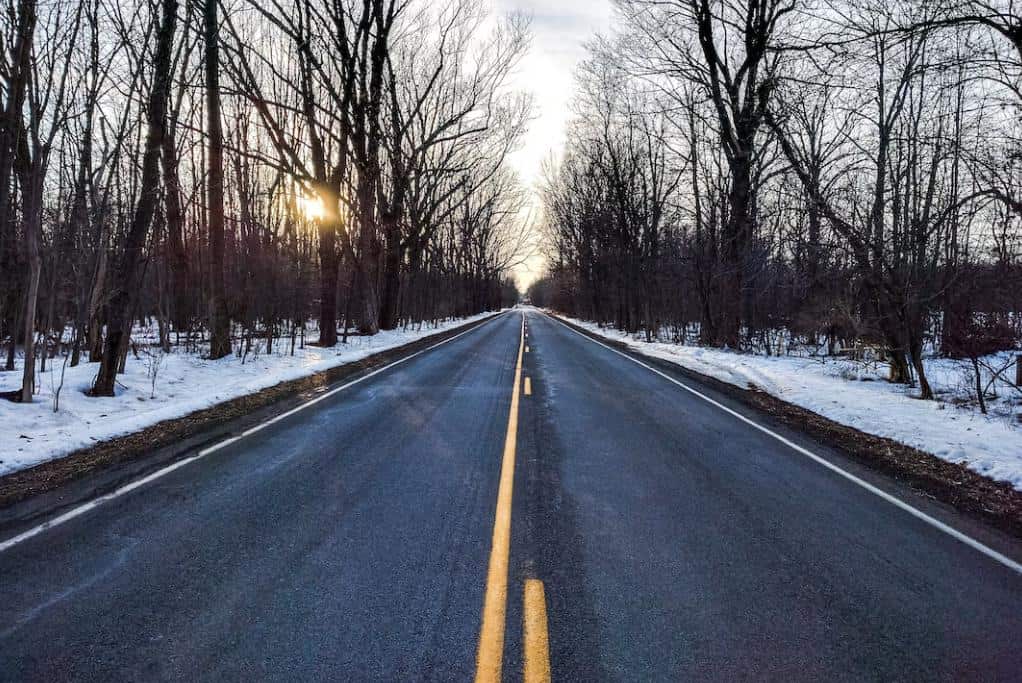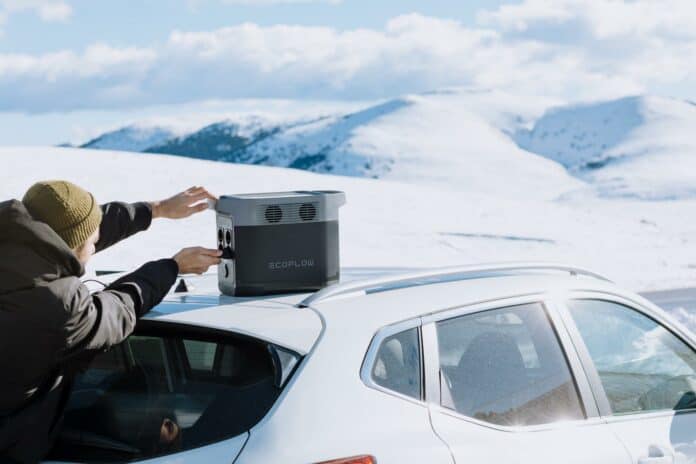In many parts of the world, winter brings pillowy white snow, cozy evenings by the fire, and festive spirits for the holiday season. And while this yearly change of seasons is a welcomed perk of living in places that see winter weather, it doesn’t come without its dangers.
While beautiful, winter weather can also seriously threaten your family’s health and safety if you don’t take precautions. You don’t have to venture out into snowy forests during Winter Storm Blair to be at risk. Here are some crucial safety tips to follow to protect your loved ones this winter.
1. Dress Appropriately
Most of the year, you don’t need to overthink what you wear. However, low winter temperatures, such as those expected during Storm Blair, demand that you pay extra attention to your outfit selection before heading out into the cold. Winter storms led to dozens of fatalities in the US due to extreme cold and weather-related conditions. Dressing appropriately can help you avoid becoming one of winter’s victims.
When getting dressed, layers are essential. Start with lighter loose-fitting layers closest to your body. The more layers you wear, the more body heat will remain trapped within your clothing. Choose an outer layer that is wind and waterproof, especially if your region is experiencing snowfall or extreme winds.
It is also crucial to keep your extremities warm. Consider incorporating wool socks, mittens, hats, scarves, and a face mask into your outfit.
Lastly, if you can choose synthetic materials over 100% cotton, you’ll do yourself a favor. Synthetic materials, like polyester, are water-wicking, which can keep you dry and warm for longer if you sweat.
2. Prepare Your Vehicle
Not all vehicles are suitable for the tundra. If you aren’t sure your car is up to snuff, take it in for a winterizing tune-up.
Check your tires. If they aren’t all-weather or snow tires, you may be at greater risk of skidding on icy roads and getting into a preventable accident. Fill your windshield fluid dispenser with a wintertime fluid to help prevent ice buildup on your windshield. When possible, keep your gas tank full. A full tank can prevent ice from getting into the tank and fuel lines.
Always keep an emergency kit in your vehicle. An emergency vehicle kit is a smart idea year-round but is especially crucial during winter. Your kit should include anything you may need if you become stranded in the snow for some time. Drinking water, nonperishable foods, blankets, battery-powered flashlights or lanterns, emergency flares, a portable phone charger, and a first aid kit are all good things to keep in your trunk.
3. Drive Safely
Winterizing your car is half the battle. The other half is ensuring you are safe while out on the road.
In snowy or icy conditions, drive at a slow yet safe speed. The key is to keep an eye on your surroundings, including other vehicles and pedestrians, while maintaining a speed from which you can safely stop without skidding on icy roads. If you begin to skid, steer in the direction of the skid to regain control. Increase your following distance behind other vehicles to allow extra time to stop. If driving uphill, try to avoid stopping if possible.
4. Prepare Your Home
Your heating system isn’t the only thing worth checking before the cold weather rolls into town. You should also ensure your chimney and gutters are clear from debris and your smoke detectors are working before lighting a fire. While it may be tempting, never leave a fire burning unattended.
Make sure you have deicing salt or sand and a snow shovel on hand so you can tend to slippery sidewalks as soon as possible.
You should also keep an emergency kit in your home, similar to the one in your car. If you lose power, get snowed in, or there is any interruption with utilities, ensure you have food, water, medications, warm blankets, and battery-powered devices to get you through the emergency.
5. Consider Backup Power
Extreme cold, particularly winter storms like Blair, may bring unexpected interruptions to the local power grid. Heavy snow may bring down large tree branches, which can temporarily knock out power lines and leave your home without electricity. While it’s always wise to stock up on extra blankets and flashlights in case of an emergency, it may be wise to invest in a backup power system for your home in case an unfortunate outage occurs—especially in the cold of winter.
EcoFlow DELTA Portable Power Stations are an excellent source of backup power. There’s no risk of carbon monoxide poisoning like there would be with a gas generator, so you can run and store them indoors without risk of harm to your family.
The EcoFlow DELTA Pro Portable Power Station can power pretty much anything with its 3.6kWh capacity (expandable to 25kWh) and offers 3600-7200W of AC output. The EcoFlow DELTA Pro is an integral part of EcoFlow’s smart home ecosystem and whole home backup power solution.
While portable power stations can’t generate electricity on their own, all of EcoFlow’s pair seamlessly with solar panels. The EcoFlow DELTA Solar Generators give you the freedom to harness clean, renewable power anytime you have access to sunlight.
6. Shovel Smartly
While it may come as a surprise, people report thousands of snow shoveling injuries each year. And many of these injuries result in a hospital visit.
Shoveling snow is just part of the deal for those who grew up in the colder regions. Without shoveling, it’s unlikely you’ll make it out of your house, into your car, or down the street. But if not done correctly, people can experience acute injuries or develop chronic issues over time.
To prevent injury, stretch before you go out. Always bend your knees, lift with your legs, and maintain a tight core to support your lower back. It’s always best to shovel soon after snowfall while the snow is still light and powdery.
Colder temperatures can also increase the risk of heart attacks in at-risk populations, so strenuous activity, like shoveling, can be dangerous. If you’re at high risk of heart-related problems, talk to your doctor before the winter season about your fitness to shovel. If necessary, make other plans. Many neighborhood groups offer shoveling services for folks who cannot do it themselves.
7. Use Caution When Outside
Even if all your neighbors shovel and salt their sidewalks, there is still a risk of injury when you go outside if you aren’t cautious. As snow hardens to ice or becomes more compact from repeat footsteps, it becomes more slippery.
If you must walk through unsafe areas, walk slowly and keep your eyes on the ground ahead. Use spikes on the bottoms of your boots if necessary to prevent falls. If walking under large trees or beside tall buildings, keep an eye out for any large chunks of snow or icicles at risk of falling on you.
When crossing the road, leave ample space between yourself and moving vehicles. Just as the streets are more dangerous for you, so too are they for cars. Allow vehicles plenty of time and space to slow down.
8. Weather Updates — Stay Informed
Compared to some extreme weather events, blizzards and subzero temperatures are relatively easy to forecast.
Established websites like Accuweather, The Weather Channel, and your local news station are all reliable sources to turn to for winter weather updates. The National Weather Service website looks like a throwback to the dial-up internet era, but the information is extremely specific and up-to-date.
The NWS also issues winter weather warnings and storm advisories for the entire US. It’s a good site to bookmark if you live in a location that regularly experiences severe cold and snow.
You’re well advised to check at least one of the above resources before embarking on an extended road trip during the winter months. Even if you’re homebound, staying informed helps ensure you’re well-stocked with non-perishable food supplies, have adequate firewood or heating oil, and access to reliable backup power for electric central heating and space heaters.
9. Be Cautious of Ice and Snow on Walkways and Roads
Reliable sources estimate that around one million Americans are injured by falls due to ice and snow annually. Approximately 17,000 of those falls result in death. Overall, more than twice as many deaths are attributed to winter weather than to summer heat.
Older Americans are at particular risk of falls due to ice and snow. Balance, eyesight — and bone density — all tend to diminish with age, increasing the risk of falling and the potential of severe injury, like broken or fractured bones.
But no one is immune from a winter slip and fall. Here are some steps you can take to limit your risk of injury (or worse).
- Pour salt or sand on walkways, driveways, and the sidewalk outside your home
- Slow down! You may be in a rush, but a nasty fall on ice or snow isn’t going to get you anywhere fast.
- Baby steps! Taking shorter-than-usual strides can improve your balance and decrease your risk of a fall
- Wear “sensible” shoes for winter conditions
- Avoid walking on sidewalks, roads or other surfaces that haven’t been plowed or de-iced

10. Practice Carbon Monoxide Safety (and Check Your CO Detectors!)
Heating your home is crucial to your well-being in the winter cold. But, depending on your fuel source, heating can also be a deadly hazard.
Improperly burning fossil fuels, wood, or even leaving a car running in your garage to warm it up can all lead to dangerous (or fatal) levels of carbon monoxide (CO) being present in your home.
Each year, at least 420 people die, and 100,000 people end up in the emergency room due to accidental carbon monoxide poisoning.
As the CDC says, deaths and injuries from CO poisoning are “entirely preventable.”
Here are some crucial steps to take to keep your family warm — and safe.
- If you haven’t done it already, install carbon monoxide detectors in your home. CO is tasteless, odorless, and deadly
- Check your CO detectors every 6 months at a minimum — or simply change the batteries regardless
- If you choose to use a fossil fuel generator — instead of a renewable energy source like solar — ensure that it is installed at least 20 feet from your home. NEVER operate a gas, propane, or diesel-fueled generator indoors
- Have any fossil fuel-burning heat sources serviced by a professional every six months — and definitely before winter
- If you use a fireplace or wood burning stove, hire a professional to ensure your chimneys or flues are clear and clean
If you or any family member suffer symptoms of potential carbon monoxide poisoning, call 911 immediately.
Final Thoughts
Prepare for the worst of Winter Storm Blair now so that you can endure it safely when it arrives. With this guide, you’ll be well-equipped to survive and thrive.
For reliable options for backup power, consider EcoFlow. Our portable power stations, solar generators, and solar panels will have you winter-ready in no time.
